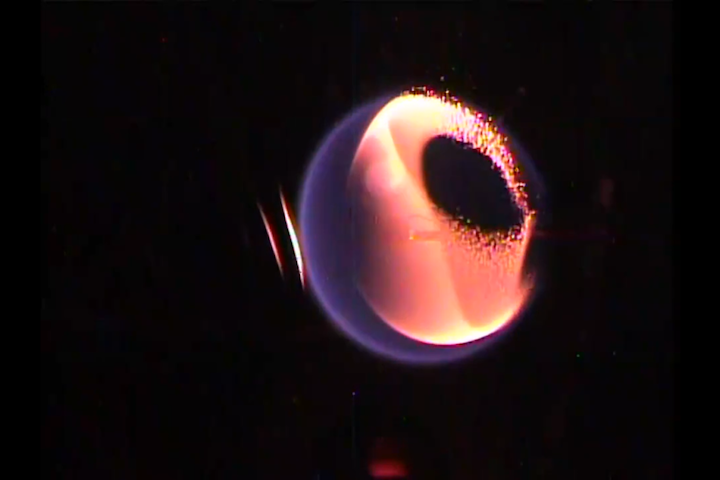21.04.2022
About 1,500 flames were ignited on the International Space Station in five years to learn how fire behaves in microgravity.

A screenshot of the Structure and Response of Spherical Diffusion Flames (s-Flame) experiment in action.(Image credit: NASA )
Similar to the cult 1981 prehistoric fantasy film, NASA is on its own "Quest for Fire" to better understand how flames work in space.
The agency lit about 1,500 flames under six investigations on board of the International Space Station, as a part of the long-running Advanced Combustion via Microgravity Experiments, or ACME, project. The goal of the project, which began in 2017, used the microgravity environment to better understand the physics, structure and behavior of flames.
"That knowledge can help designers and engineers here on Earth develop furnaces, power plants, boilers, and other combustion systems that are more efficient, less polluting and safer," Dennis Stocker, ACME Project Scientist at NASA Glenn Research Center, said in a recent agency statement.
NASA astronaut time is precious, so as much as possible the ACME team sought to run the experiments remotely from NASA's Glenn ISS Payload Operations Center in Cleveland.
The experiments, housed inside a module inside the station's Combustion Integrated Rack, spanned 4.5 years of in-orbit operations. While ACME is no longer there — it was removed in February to make place for a newer set of fire-safety experiments called the Solid Fuel Ignition and Extinction, or SoFIE — Stocker said the contribution of the ACME experiment set was more than originally envisioned.
"Over 1,500 flames were ignited, more than three times the number originally planned," Stocker said. "Several 'firsts' were also achieved, perhaps most notably in the areas of cool and spherical flames."
ACME's hardware should return to Earth sometime in 2022, NASA noted, and will be repurposed for a new set of experiments that will go to space in the next few years.
- Burning Rate Emulator (BRE) – demonstrated materials can burn for minutes in the absence of air flow in crew vehicle atmospheres being considered for future missions.
- Coflow Laminar Diffusion Flame (CLD Flame) – yielded benchmark data at sooty and highly-diluted extremes to improve computational models.
- Cool Flames Investigation with Gases (CFI-G) - resulted in non-premixed cool flames of gaseous fuels without enhancements, such as heated reactants, pulsed plasmas, or ozone addition, that have been required in ground testing.
- Electric-Field Effects on Laminar Diffusion Flames (E-FIELD Flames) – demonstrated the potential use of electric fields to reduce emissions from non-premixed flames.
- Flame Design – demonstrated, for the first time, quasi-steady non-premixed spherical flames, and radiative heat loss leading to extinction for larger flames.
- Structure and Response of Spherical Diffusion Flames (s-Flame) – provided data on flame growth and extinction for the improvement of computational models.
Quelle: SC
